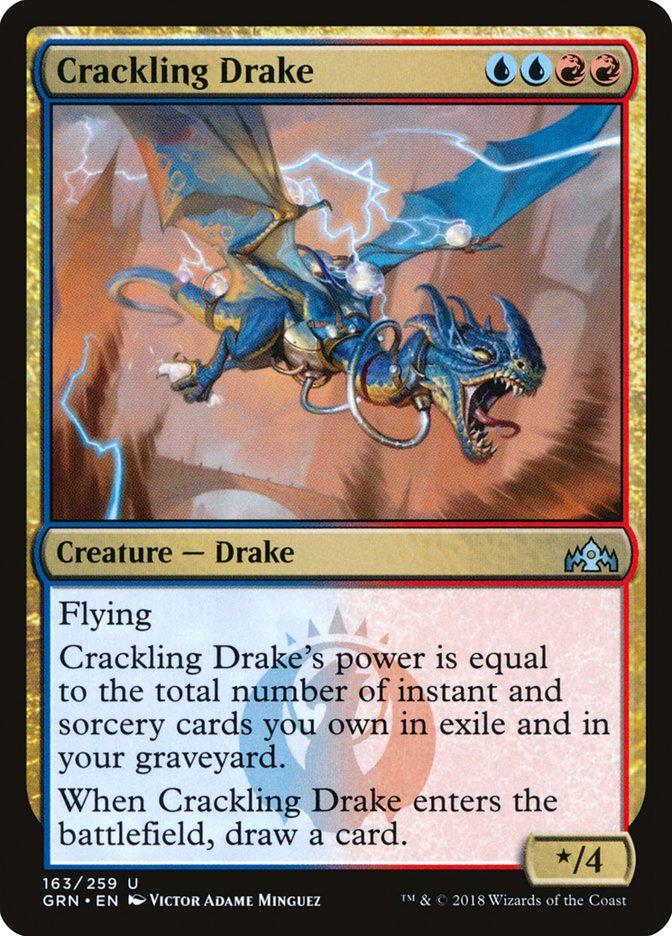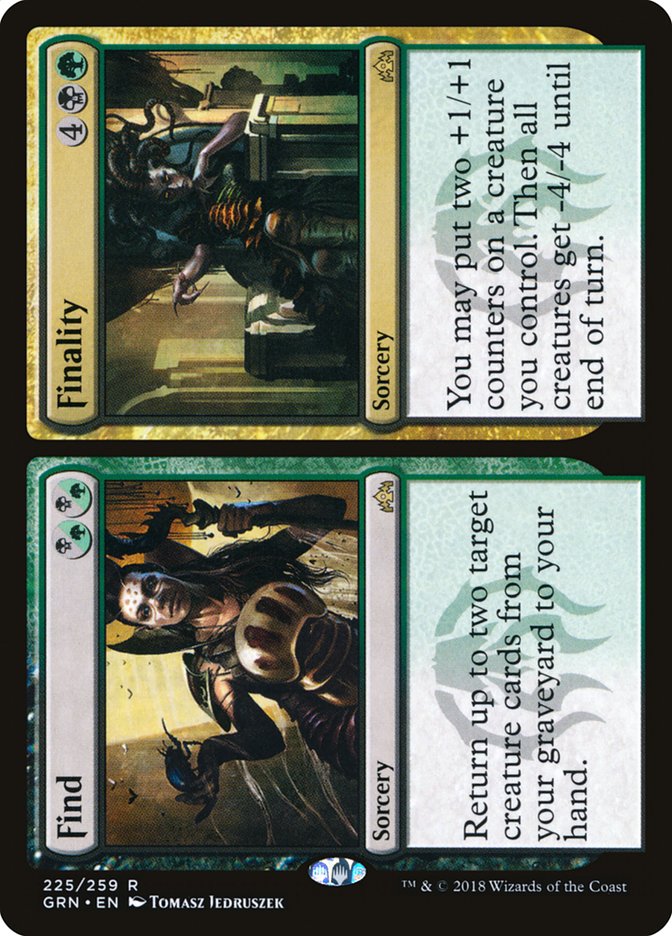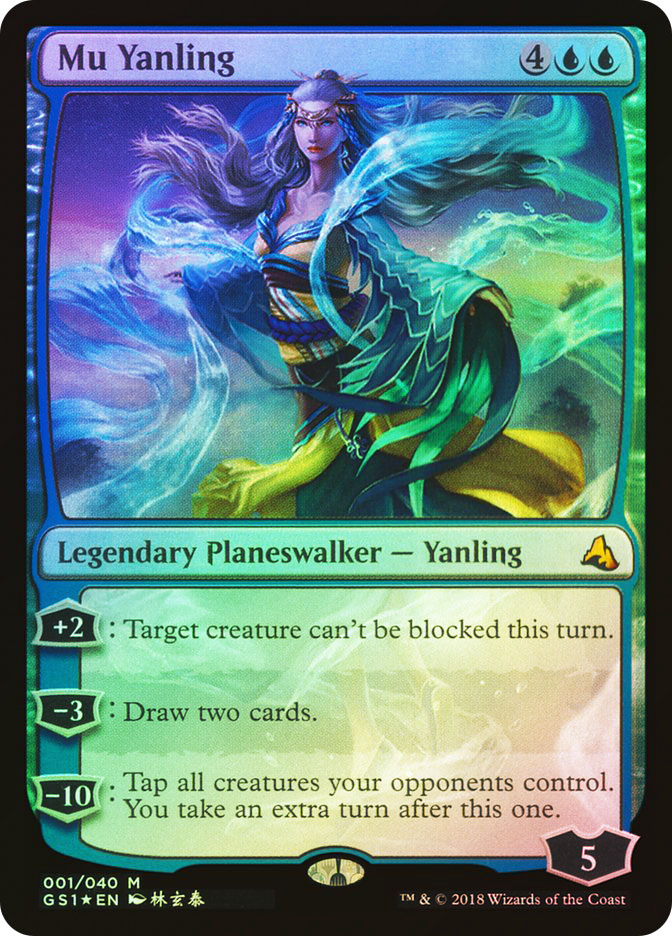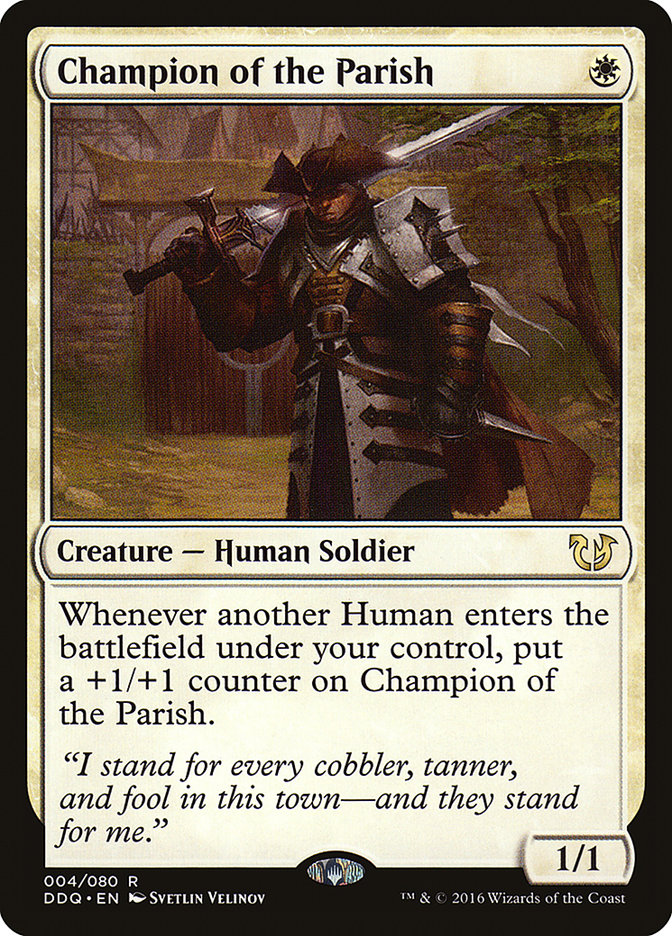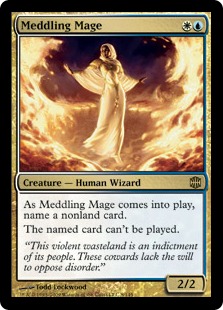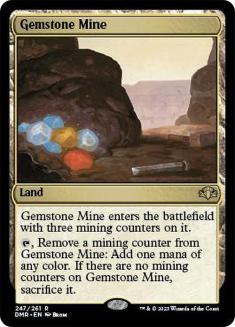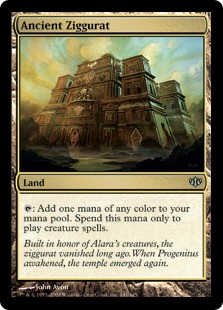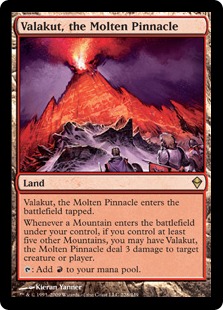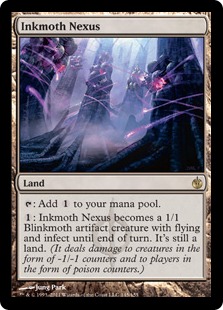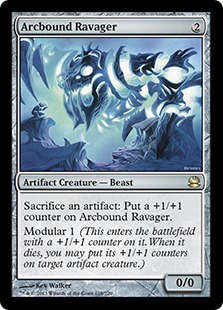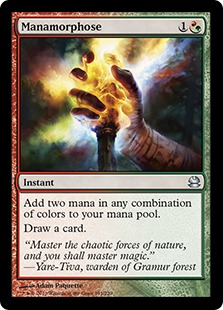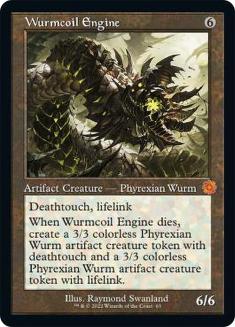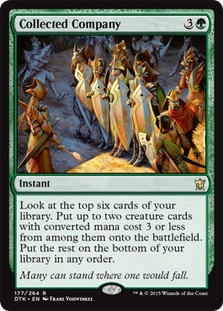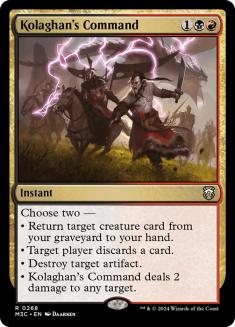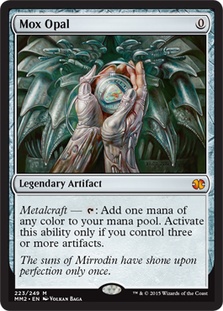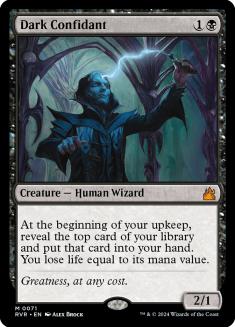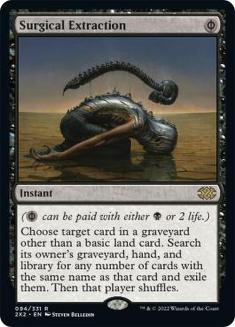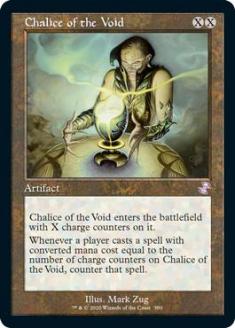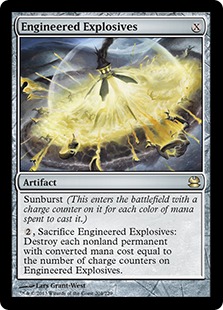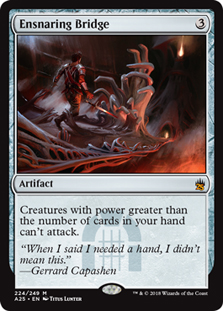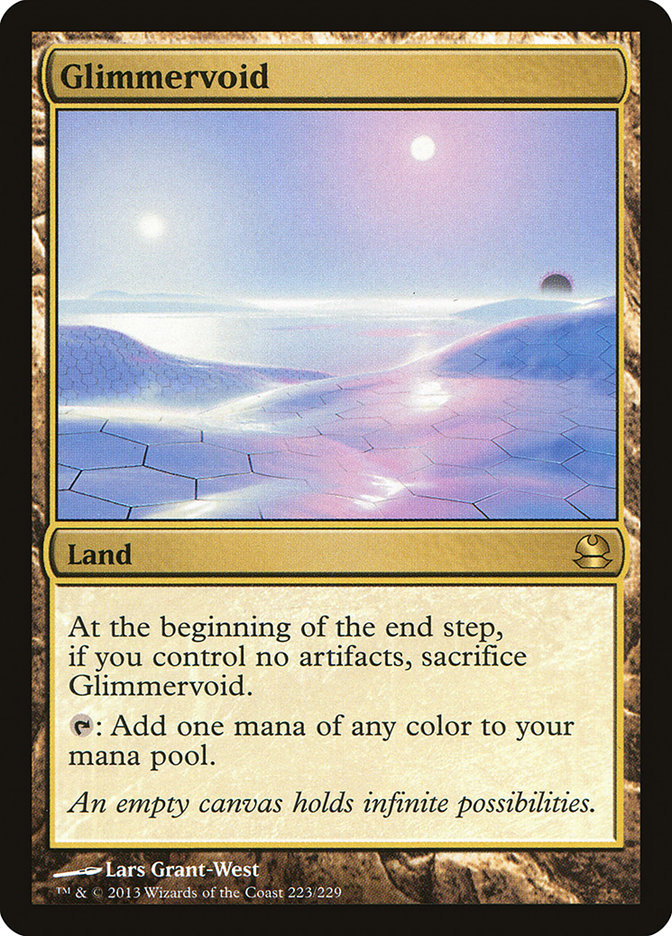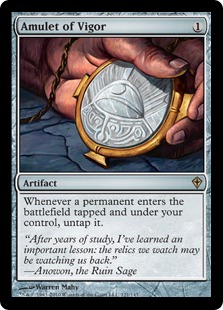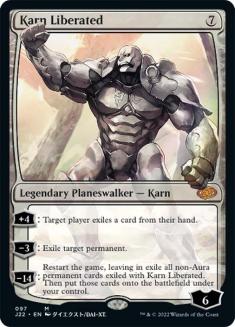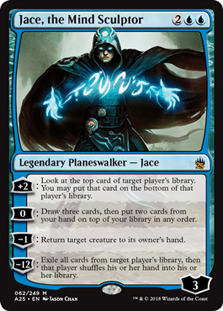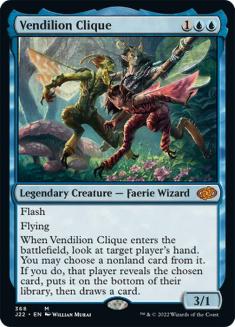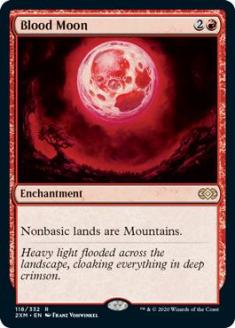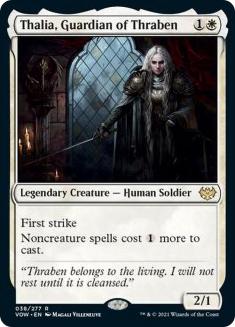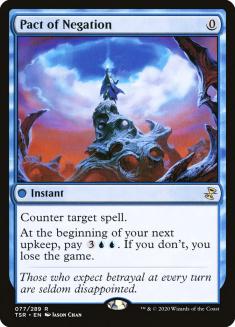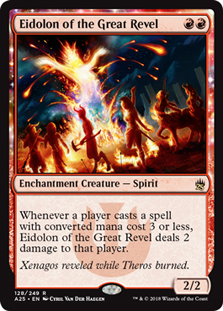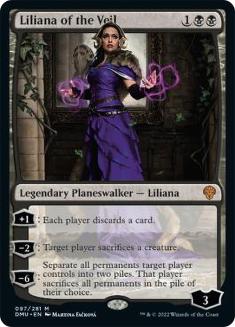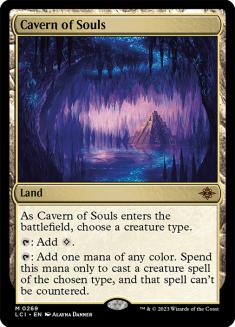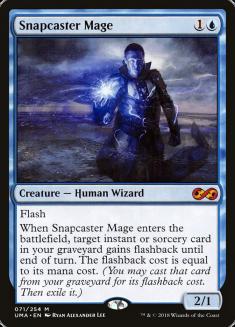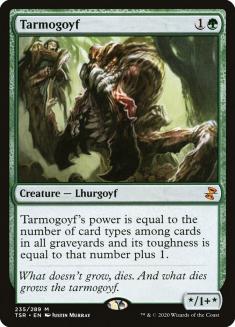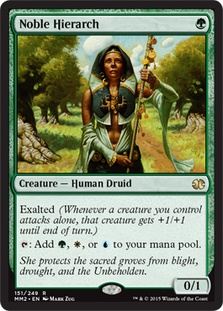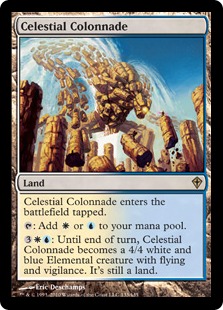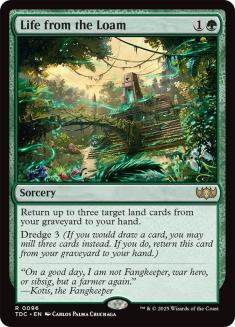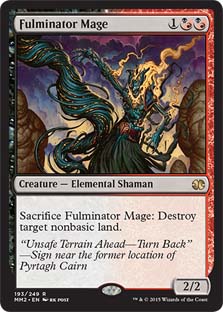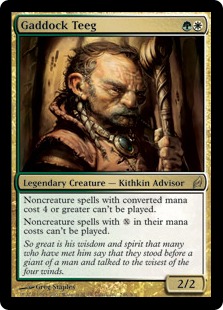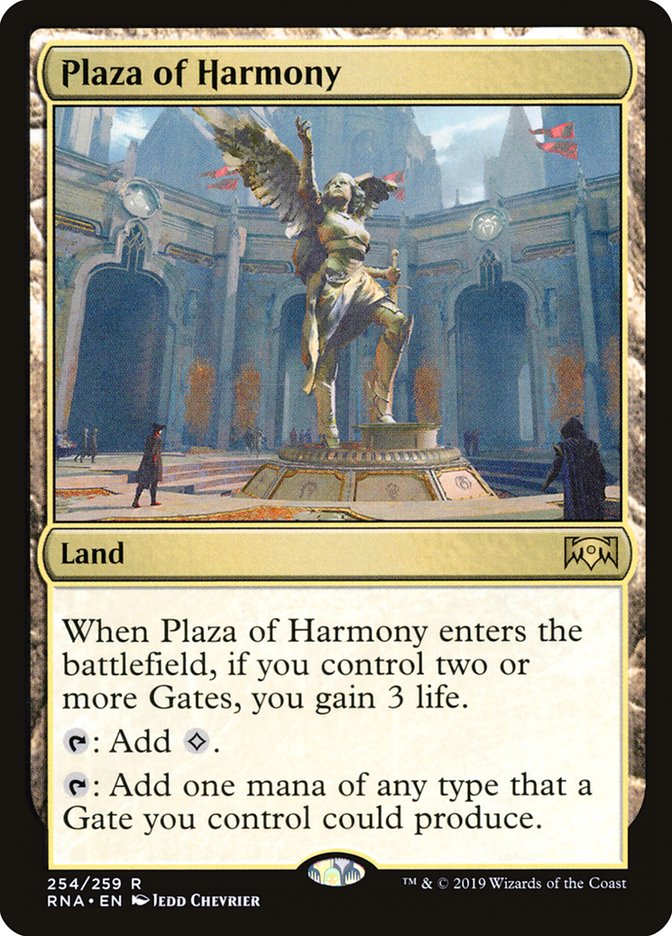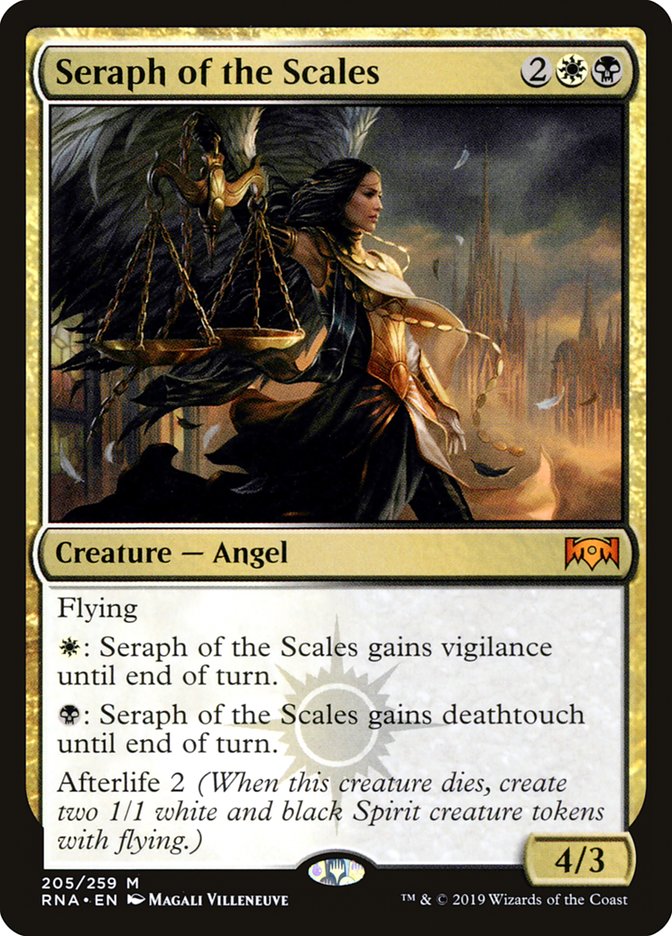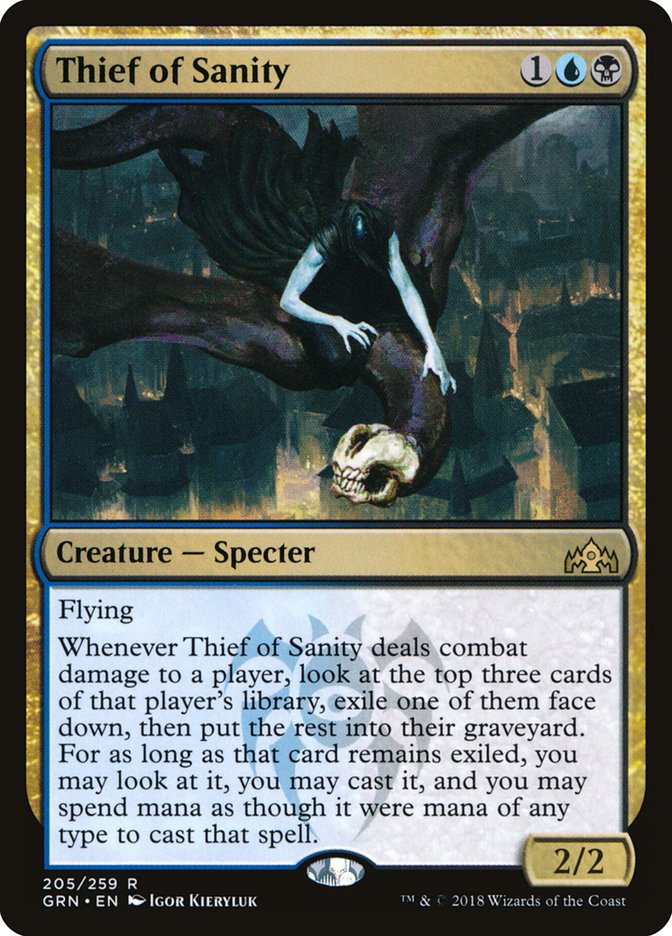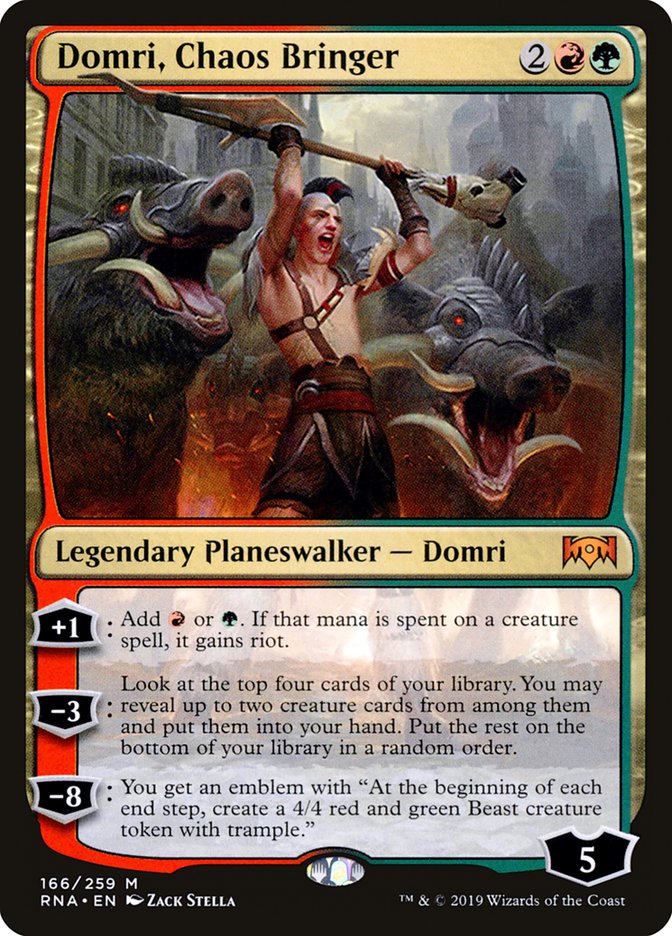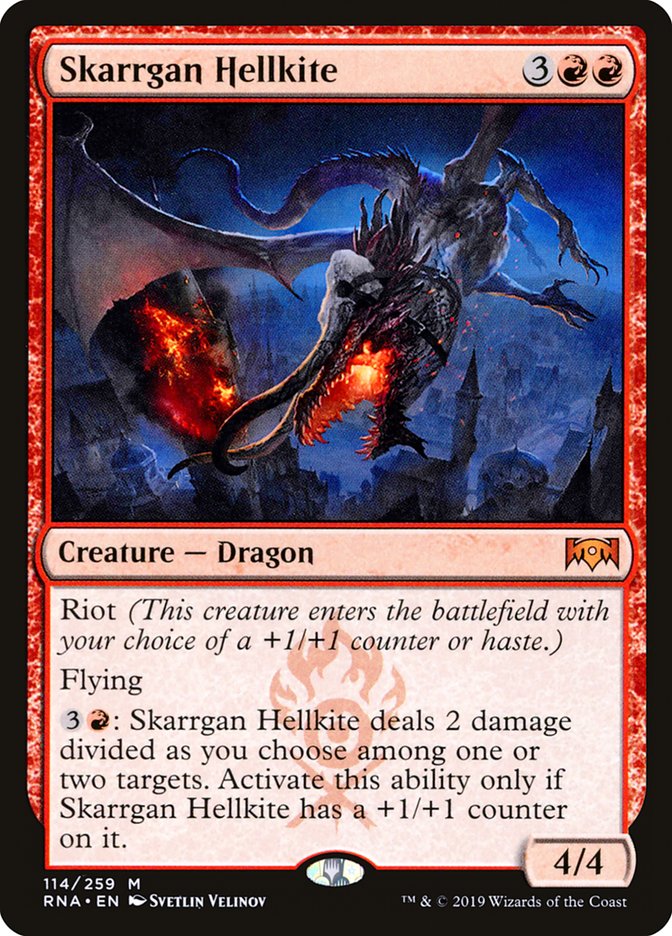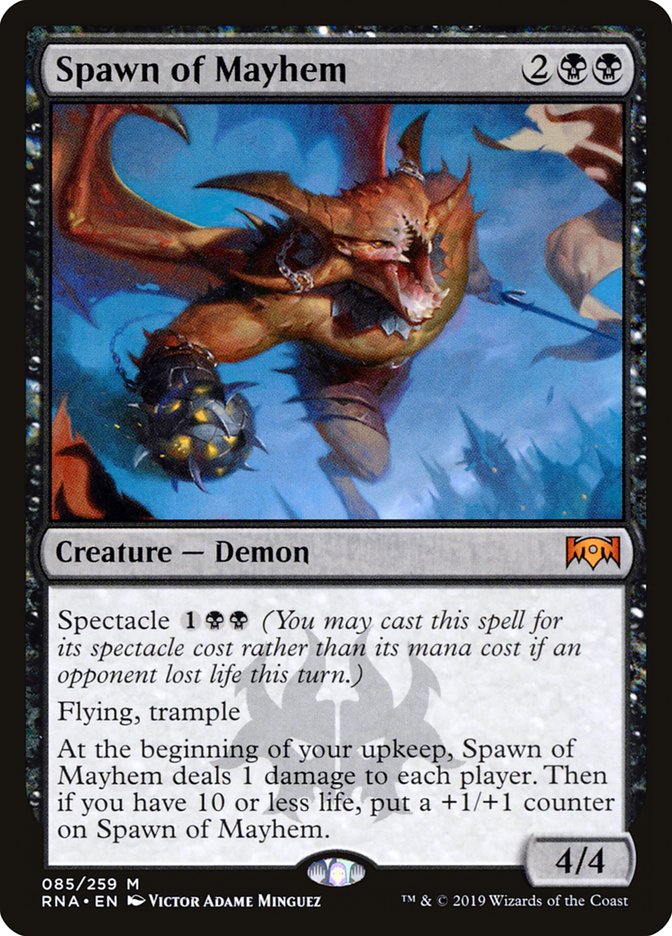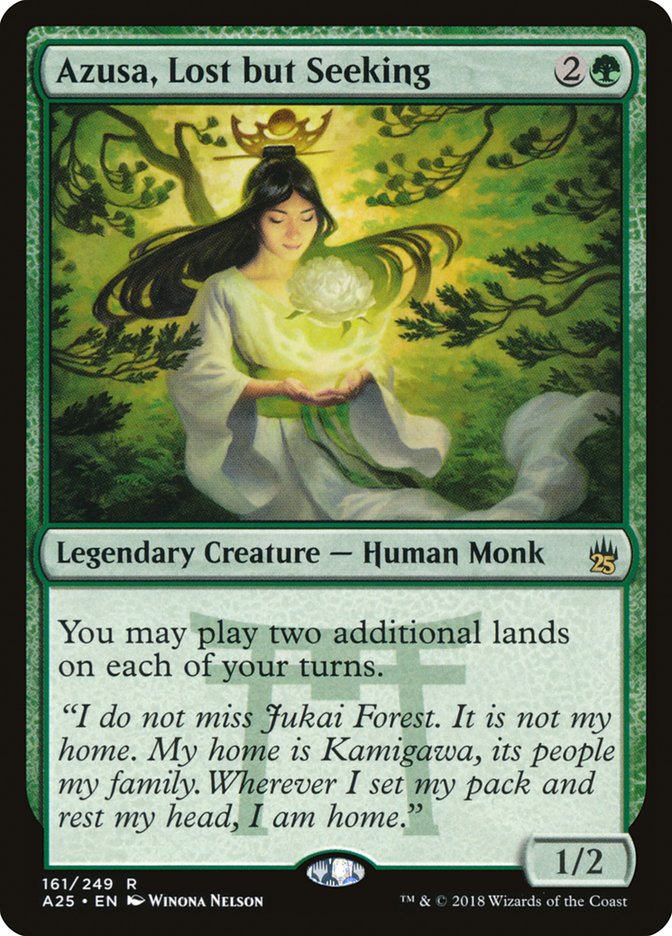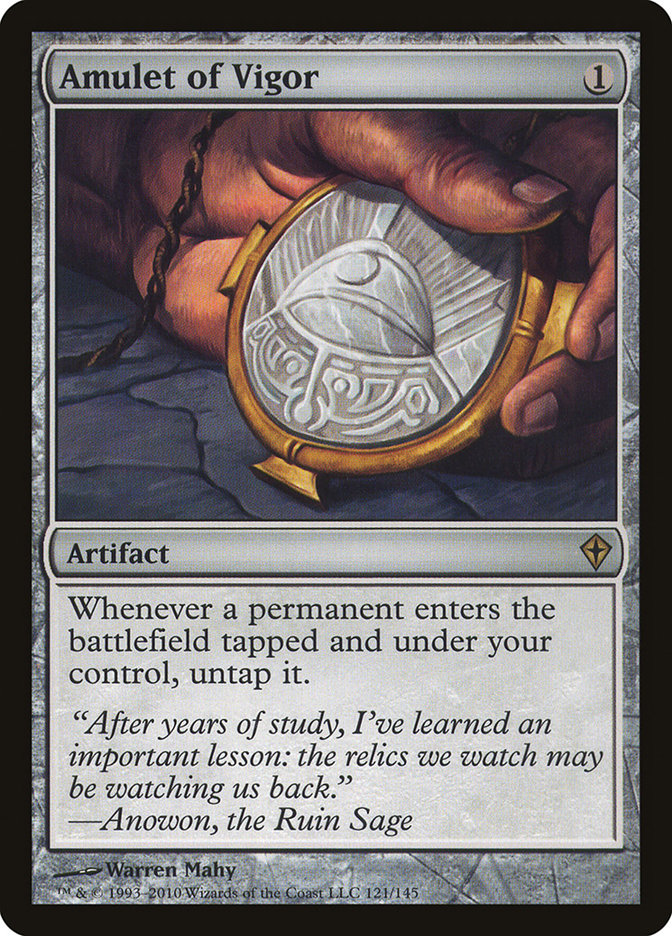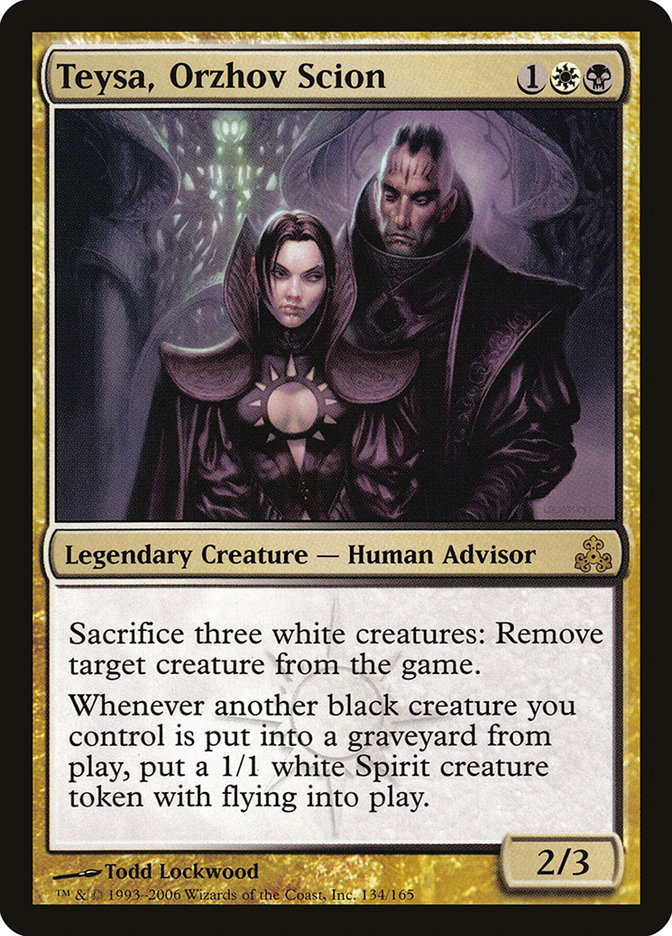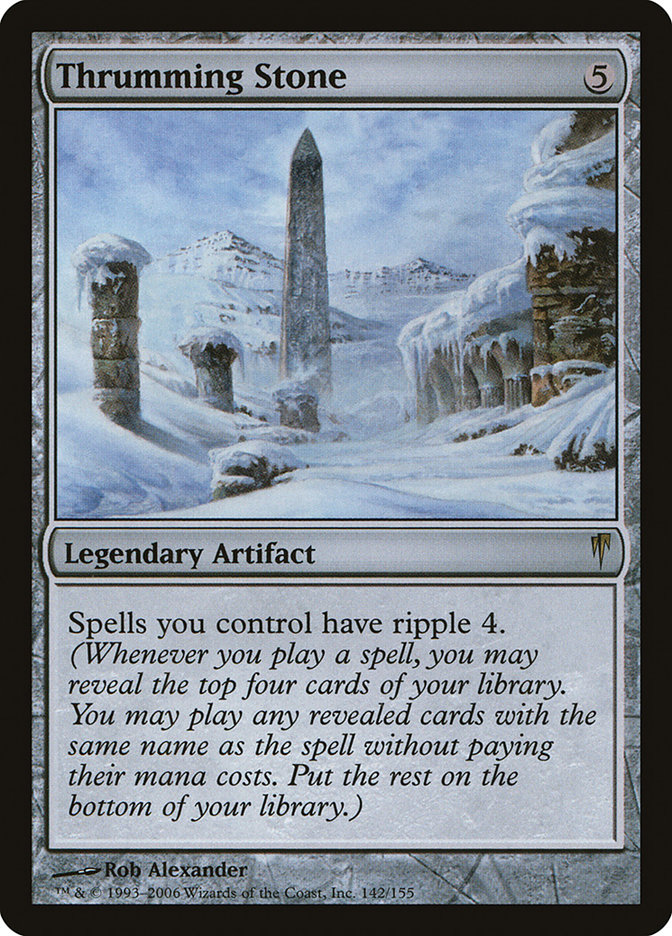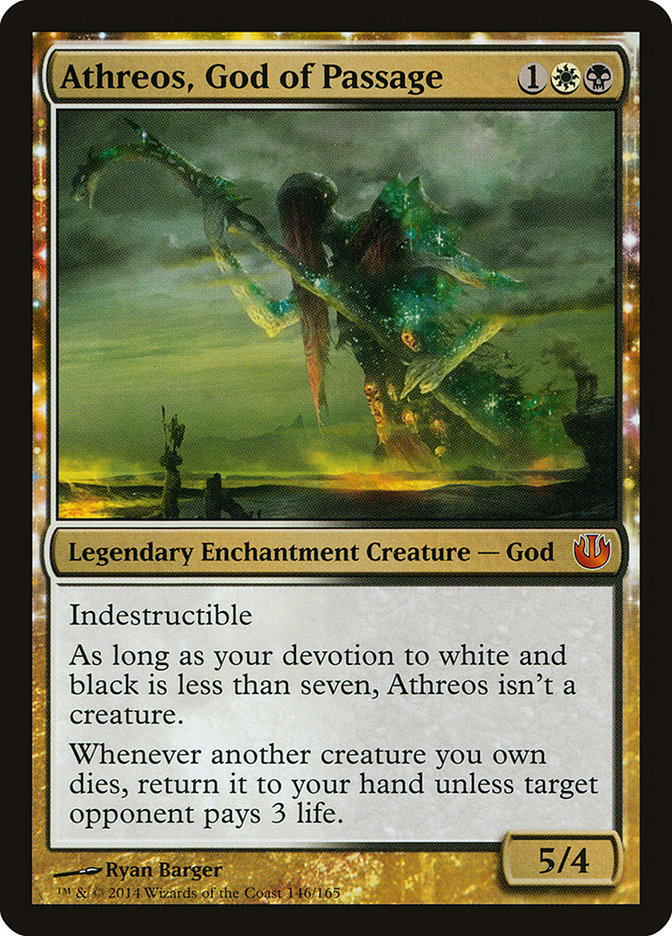The Modern market has been slowly losing steam for several months now. In fact, according to the fine folks at MTG Goldfish, the overall Modern Staples Price Index has dropped by roughly one-third since its high back in May of 2018.
Granted, this isn’t a perfect measurement of Modern’s overall cost. Cards are added to and removed from Goldfish’s list of format staples as the metagame evolves, which means that some of this lost value is likely due to more expensive decks falling out of favor as opposed to prices actually dropping. A more comprehensive index I found shows an overall drop of just 10%, though that list includes a few hundred $2-$5 cards that are always going to be relatively inelastic due to how cheap they already are. There are all sorts of factors that can cause a card to drop from $40 to $20, but reprints are pretty much the only way to get a $4 card to hit $2.
But whether you want to measure the drop in Modern prices at 10% or 30% (or somewhere in between, which is probably the most accurate way to look at things), it’s undeniable that the market has been falling for a while. It hasn’t been a crazy panic or anything, just a slow drip-drip-drip that you may or may not have even noticed.
So, what the heck is happening here? More importantly, are Modern prices going to keep dropping, or are we about to see a major rebound?
I’m sure most of you already have your theories, but my goal today is to explore the immediate past and future of Modern as thoroughly as I can. And don’t worry – if you want some concrete tips on the best Modern cards to buy and sell right now, I’ve got you covered on that front, too.
But first, let’s answer a simple-sounding question:
Why Did Modern Prices Drop?
As with everything in Magic finance, this is a complex and multi-faceted question. Let’s see if I can come up with all the reasons why prices have been dropping:
Guilds of Ravnica Standard had an all-time great metagame. I know some of you disagree with me on this, but I feel like I’m on pretty firm ground when I say that a majority of players enjoyed the heck out of Guilds of Ravnica Standard. Not only was it the sort of format where you could bring a rogue deck to FNM and hope to have it perform reasonably well, but even the top of the metagame was constantly shifting and evolving. Powerful decks like Izzet Drakes and Golgari Midrange had their weeks on top, but no single deck was dominant and oppressive for the entire season.
Fall is always a low season for Modern. Not only does Standard rotate in the fall, giving us the freshest and most exciting iteration of that format, but it feels like Wizards of the Coast never really schedules any major Eternal tournaments during that time of the year. If you go back through the history of the game, the height of “Modern Season” (even after the concept of a strict Modern PTQ/PPTQ season was abandoned) has always been late January through early May.
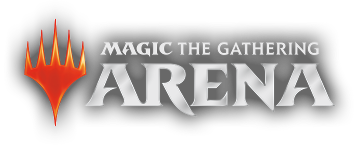
We all started playing Arena this fall, and there’s no Modern on Arena. We can argue until we’re blue in the face about Arena’s place in Magic’s future, but what’s undeniable is that most entrenched Magic players picked up Arena for the first time this autumn and played the heck out of it. We all only have so much Magic-playing time in our lives, and I don’t think I’m off-base in suggesting that some people shifted some of their attention away from Magic Online and tabletop (platforms where you can play Modern) to Arena (a platform where you cannot play Modern.)
The cryptocurrency markets crashed. This is a bit of a tentative link to Magic, but there has always seemed to be a lot of cross-pollination between crypto folks and Magic speculators. One of the first and most famous Bitcoin exchanges was originally a place to buy and sell Magic cards, for example, and my Twitter followers sure didn’t seem to like my constant criticism of the crypto bubble last year.
Regardless of what you think about cryptocurrencies, though, the massive crypto rally in late 2017 and early 2018 sure did seem to lead to higher Magic prices. This was especially true with Reserved List staples like the Power Nine and dual lands, but it’s hard to argue that there wasn’t a spillover into Modern as well. Now that the vast majority of cryptos have finished tanking, there’s less money to go around.
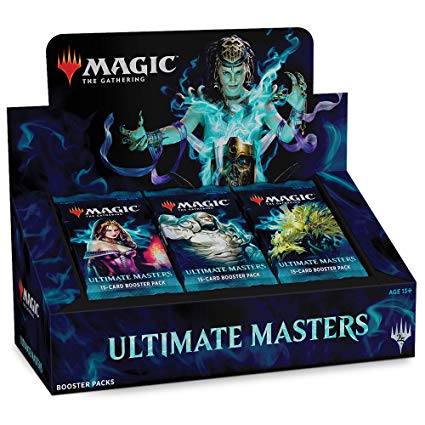
Ultimate Masters did its job very well. I saved this point for last because I think it’s the most important factor in play here. Ultimate Masters was the best Masters set of all time, and it was chock-full of expensive and powerful reprints. Wizards of the Coast did a good job printing just enough Ultimate Masters to cause prices to drop without creating a panic or tanking the market, and the result is a format that’s now somewhere between 10% and 30% easier to play.
So that’s why the Modern index has been slumping. But will that slump continue, or will 2019 end up being another great year for Modern? Let’s talk.
Potential Warning Signs for Modern
The biggest problem facing Modern in the near future is that Wizards of the Coast has been clear about putting Arena front and center this year. Since you can’t play Modern on Arena right now, that means that most of the highest-profile events on the calendar are going to be Standard.
This is going to be a problem because the Modern market only tends to rally when that format is front and center in the eyes of the Magic community. Modern Mythic Championships. Major Grand Prix events. Masters sets. Things like that. It’s hard for me to look ahead to the Organized Play calendar and say things like, “Okay, yes, this is when the Modern prices are going to rise.” This is especially true since we don’t really know if any of the upcoming Modern Magic Fests will have any video coverage. Probably not.
A lot of the “Modern is dying!” doomsaying over Wizards of the Coast’s pivot to Arena is based on really short-sighted thinking. The simple truth of the matter is that Modern sells packs. It sells them both directly (via sets like Modern Masters and Modern plants in Standard-legal sets like Prime Speaker Vannifar) and indirectly (Modern keeps the value of cards high, which makes customers more confident in their purchase of Standard-legal sets).
Modern keeps enfranchised players invested in the game for longer, and it’s a nice long-term goal for new players to aim toward. Modern is also Wizards of the Coast’s Get Out of Jail Free card for a particularly bad Standard season. Nothing but Mono-Red for six straight months? Just focus on Modern and everything will be more or less okay.
I’m certainly curious if everyone up in Renton understands this as well as they should, because some of the Organized Play changes that have been made over the past few months feel like they might be overestimating how bad Standard can get from time to time. After all, if you’ve got a small farm, you don’t fill every field with soybeans just because you had one really good soybean season. What are you going to do the next time there’s a soybean blight? But I do trust that the people who interact most with Magic on a day-to-day basis understand how important and beloved Modern is, and I don’t have any reason to disbelieve Aaron Forsythe when he tells me that Modern is still a big part of Magic.
Yes. Modern is a big part of Magic! https://t.co/rZ5Qq94BOg
— Aaron Forsythe (@mtgaaron) December 7, 2018
Why It Might Be Time to Buy into Modern
If you’re willing to overlook the whole “Wizards of the Coast is focused on Standard and Arena right now” thing, the future for Modern looks bright. Consider:
Ultimate Masters is now behind us. A large chunk of the Modern index was literally just reprinted. Even if Wizards of the Coast offers us more reprints in the near future (more on this a little later), most of these Ultimate Masters cards are not going to be reprinted for years. The only reason they won’t be going up in price is if the Modern index collapses, which I really don’t think is going to happen.
Spring is usually Modern season. I’m admittedly a lot less certain about how much this is going to matter in 2019, because the state of Wizards of the Coast’s tabletop Organized Play infrastructure is in so much flux right now. The US government shutdown and last year’s Republican tax bill have also affected peoples’ tax refunds in a negative way, which many Magic players use to make their yearly splurge on expensive Magic cards. That said, Modern prices have almost always gone up in the spring, and it would be equally silly to totally dismiss the possibility that the thing that always happens will happen again.
Arena’s popularity will eventually lead to more tabletop Magic players – and higher Modern prices. Most LGS owners I’ve talked to have experienced an increase in attendance at FNM and Prereleases, with a lot of new faces arriving thanks to Arena. The same thing happened with Duels of the Planewalkers came out in 2011. Eventually, some of these new players will want to buy into Modern, and they’ll need cards.
The Magic community will eventually get antsy for some Modern. This is more of a gut feeling than anything, but the Magic community is always clamoring for more content, more formats, more ways to play their favorite game. Making Standard awesome is one thing, but it won’t be the only thing. At some point, our focus will be on Modern again – whether that’s overtly encouraged by Wizards of the Coast or not.
We might be less than a month away from the most important Modern announcement since the original Modern Masters in 2013. Okay, so this is still a little speculative, but bear with me. An official Wizards of the Coast Twitch stream hinted that “Modern fans should pay attention at the end of February,” to which Mark Rosewater responded that “this product is this year’s innovation product and was created through our very first Hackathon.” These Hackathons are where products like Battlebond, Unstable, and Modern Masters were created, so it’s no stretch to think that this new product is going to be on that level.
While some people are dismissing this talk as Mark Rosewater being overexcited about new Modern Event Decks or something equally humdrum, I feel pretty confident that this is going to be a bigger deal than that. We’ve already had Modern Event Decks, after all, so a new set of them couldn’t really be “this year’s innovation product.” Further, you wouldn’t need a whole Hackathon to come up with the idea of throwing Hardened Scales Affinity into a 75-card box and calling it a day.
In fact, I can’t think of a single alternative for this product that’s even half as likely as it being a brand new “direct to Modern” expansion. A new Battlebond-style casual expansion wouldn’t excite Modern fans (like the initial video claims), and it’s pretty clearly not just another random Standard-legal expansion.
Further, Gavin Verhey’s State of Product Design article from last week drops some hints in this direction as well. For one, he talks at length about how Wizards of the Coast knows that it needs to keep delivering crucial Modern reprints even though the Masters sets are done. For another, he talks about how R&D was frustrated by trying to keep products like the Global Series decks Standard legal, and how future products like that might not end up being legal in Standard.
Hmm. So if Wizards of the Coast is relaxing their stance on certain products being Standard-legal and they’re looking for a way to get Modern reprints out there without using Masters sets…
You can see where I’m going here. I started talking about diminishing returns and reprint equity in Masters sets several years ago, and the best fix I found for the problem back then was for Wizards of the Coast to release a Conspiracy or Battlebond-style set where half the cards are Masters-style Modern reprints and the other half are brand new cards designed with Modern play in mind. Not only would this solve the problem of needing people to buy your yearly Masters sets without having to make them all as good as Ultimate Masters, but it would solve the problem of Modern becoming more and more stale with each passing year.
Even though Modern is still great, each new expansion is still adding a smaller and smaller percentage of cards to the overall card pool. Modern was 30 sets deep when it was created, so the first set to be added to Modern, Magic 2012, increased the size of the card pool by about 3.3%. Modern is 61 sets deep now, so the next expansion will only increase the card pool by 1.7%. And that number is just going to keep dropping.
While creating Modern-only sets is risky business – the power level of the set is going to be high, which might throw the metagame into chaos for a while – it’s also the best way to drum up interest for the format and to drive prices into the stratosphere. Seriously: you think people get excited about Modern after a card like Prime Speaker Vannifar comes out, or in the lead-up to a Modern Mythic Championship? Imagine what’ll happen if we get an entire preview season for a set of brand-new cards designed for competitive Modern play. If this product is real, it’s going to be an absolute financial game-changer.
Now Is the Time
The way I see it, Modern cards are going to rally at some point, sooner or later.
If it’s sooner, everything will start clicking into place as soon as the new Modern set is announced. The initial Wizards of the Coast stream said that we’d learn more in “late February,” which probably means that we’ll get an official announcement on or around the Mythic Championship on the weekend of February 22nd. That’s just two weeks from now!
If the Modern market doesn’t rally until later, that probably means that this new product isn’t as cool as I want it to be. As I said earlier in this piece, there’s still a chance that the Modern market will rebound this spring regardless of Wizards of the Coast’s desire to highlight Standard and Arena, but it’s certainly no guarantee.
But even if the Modern market is quiet all spring, something will happen at some point that will cause prices to rise. Maybe it’ll be a Modern Mythic Championship later this year or next winter. Maybe they’ll find a way to bring Modern to Arena. Maybe it’ll just be a community shift toward the format next time Standard gets stale.
Regardless, I feel like it’s smart to buy into the format right now. Not only do you get the long-term upside of knowing that Modern will eventually rebound, but you get the short-term upside of knowing that a new product might cause the market to rally in a major way as soon as two weeks from now. What’s not to love about that?
The Best (and the Worst) Modern Buys Right Now
If we’re betting on the price recovery of an entire index, then the latest metagame trends don’t matter as much as making sure that you don’t get blown out by a reprint. While the brand-new cards would likely be the highlight of a Modern-exclusive expansion, there will almost certainly be reprints in there as well. Even Battlebond had some high-profile reprints to help sell packs, like Doubling Season and True-Name Nemesis.
Which expensive Modern cards are overdue for a reprint? This article breaks down all the relevant reprints by year, and I suggest reading it now if you want a comprehensive answer to this question. To me, the key cards to avoid right now are:
These are the most expensive Modern staples that haven’t been reprinted since 2015. You can also add the Khans of Tarkir fetchlands to this list if you want, though it’s possible that we might see a brand-new cycle of lands, or the Zendikar fetchlands, or even the Scars of Mirrodin fastlands. Regardless, there are a lot of expensive cards in this set that could easily help sell this new product.
And, yes, I’m still looking for the reason why Mox Opal wasn’t in Ultimate Masters. Maybe this is finally the right answer.
I’m not sure I want to be holding onto any of the Ancient Stirrings or Mox Opal decks long-term, either. While I’m not afraid of an imminent ban, nor do I think that these cards will be immune from the rally that’ll happen if I’m right about an upcoming Modern-only set, there’s a chance that these two cards will be banned at some point before the market does rally again. So, if we end up on the slow path, I’d rather not be holding cards like:
On the flip side, the safest buys right now are staples that were reprinted in one of the last two Masters sets. These cards are almost certainly not going to be reprinted at any point over the next year or two, so you’re good if Modern rallies soon and you’re good if it you have to wait a while. These are my favorite buys from Ultimate Masters and Masters 25:
The other option is to simply look at the current Modern metagame and try to figure out what is being undervalued right now, but for once I don’t think that’s actually the best angle. If there really is going to be a set full of new Modern-legal cards, the staples that are going to rise are going to be the ones that play well with whatever ends up getting previewed; it could end up being anything from current top of the meta decks like Grixis Death’s Shadow and Jeskai Control to Goblins or Infect or something else that’s totally off the beaten path. We just don’t know yet.
And if the Modern index just sort of kicks along for a couple of months without doing all that much…well, the metagame of August 2019 or January 2020 is going to look entirely different from the metagame of today regardless. It’s smarter to place a bet on, say, all the best cards from Ultimate Masters still being good in a year than on any specific deck.
That said, if you’re just looking for a deck to buy now and you’d prefer not to wait until the Wizards of the Coast announcement that might cause all the prices to go up, I’d take a look at something like Izzet Phoenix or Dredge. Both decks are hot, good, relatively affordable (at least for a Modern deck), and unlikely to be banned or hated out of existence anytime soon. There’s no such thing as “safe” when it comes to a given metagame, but both decks have decent price-to-risk ratios in my mind.
Regardless of how you choose to invest, I feel like the important thing is to at least consider taking a look at Modern right now. With the eyes of the community elsewhere and all the recent focus on Arena and the Organized Play chaos, it might be the best buying window that we’ve had in years. And, if this late February announcement is as exciting as I want it to be, then we might be two weeks away from an all-time great Modern rally.
This Week’s Trends
It was another bull week for Standard’s most-played cards, with Standard staples like Hydroid Krasis and the Ravnica Allegiance shocklands increasing in price. While there weren’t any massive Standard spikes this week, the overall state of the market indicates that we’re in yet another popular Standard format. When cards like Hydroid Krasis are still rising in price a few weeks after breaking out, that bodes well for the metagame at large.
Interestingly enough, the two Standard decks that saw the most financial action this week are closer to the format’s second tier than its first. Gates staples like Plaza of Harmony and Circuitous Route tripled in price this week, while Esper Midrange stalwarts like Seraph of the Scales and Thief of Sanity saw slightly more modest price increases. The Gates increases make the most sense, because that deck was simply too cheap. It may not be a total world-beater, but it’s good enough (and fun enough!) to make the demand feel organic to me.
As for the Esper Midrange spikes…well, it may be slightly more complex than it looks at first glance. Thief of Sanity also sees play in Esper Control, and it’s one of the few cards in that deck that sees play in multiple top-tier Standard strategies. I’m not surprised that Thief of Sanity is finally ticking up toward the $5 range, where it should remain for a while.
Meanwhile, other Orzhov cards like Seraph of the Scales and Elenda, the Dusk Rose might actually be increasing in price due to Teysa Karlov’s popularity in Commander. Commander demand rarely affects the prices of Standard-legal cards, but when you combine Teysa’s sheer popularity with the fact that these cards also see play in competitive decks, you can start to understand why they’re still on the rise.
On the flip side, this week’s biggest Standard losers are the Ravnica Allegiance cards that nobody is playing yet, like Domri, Chaos Bringer; Skarrgan Hellkite; Spawn of Mayhem; and Judith, the Scourge Diva. While most of these cards are incredibly powerful, they just haven’t found a home right now. Some of them will likely rebound over the next couple of weeks as the metagame evolves, but most of them will bottom out at some point in late February or early March. That’s the time to buy in for the long haul.
Over in Modern, this week gave us some of the biggest spikes in months. Staples like Azusa, Lost but Seeking and Surgical Extraction gained $10, while Jace, the Mind Sculptor and Amulet of Vigor were each up $5. This bodes well for my “Modern might just gain value in the spring anyway, regardless of other factors” theory, and it makes me even more confident in my belief that now is the best time to buy into the format. Modern even had a decent week on Magic Online, for the first time in seemingly forever. Will this trend continue? We can only hope!
There were quite a few Commander spikes this week as well. Cold Storage jumped from bulk to almost $10 thanks to its interaction with Rakdos, the Showstopper, though it’s worth keeping in mind that this is one of the few Tempest rares that isn’t on the Reserved List. $5 seems like a reasonable long-term outlook here. Great-Oak Guardian was also up big this week thanks to Vannifar chains in Commander, and that’s another one that I expect to settle in around $5.
The Teysa spikes haven’t stopped yet either, with Teysa, Orzhov Scion (the one from Guildpact) finally joining in the fun. Athreos, God of Passage also continued to surge in price, finally settling in at a whopping $35 or so. (It’s currently sold out at $25 at Star City Games.) As always, these Commander spikes are absolutely real, but selling into the hype is still recommended.
Lastly, Thrumming Stone was the biggest gainer of the week, jumping from the mid-thirties all the way up to the $60 mark. This was absolutely the result of a calculated buyout, and it’ll be interesting to see if the new price sticks. As if this writing, there are still four Japanese copies available on Star City Games for $36, so I have to believe that this thing is coming back to Earth. Persistent Petitioners decks are really fun, though, so it’s not like this buyout doesn’t have some solid reasoning behind it. I just wouldn’t pay the new price for this card quite yet.


